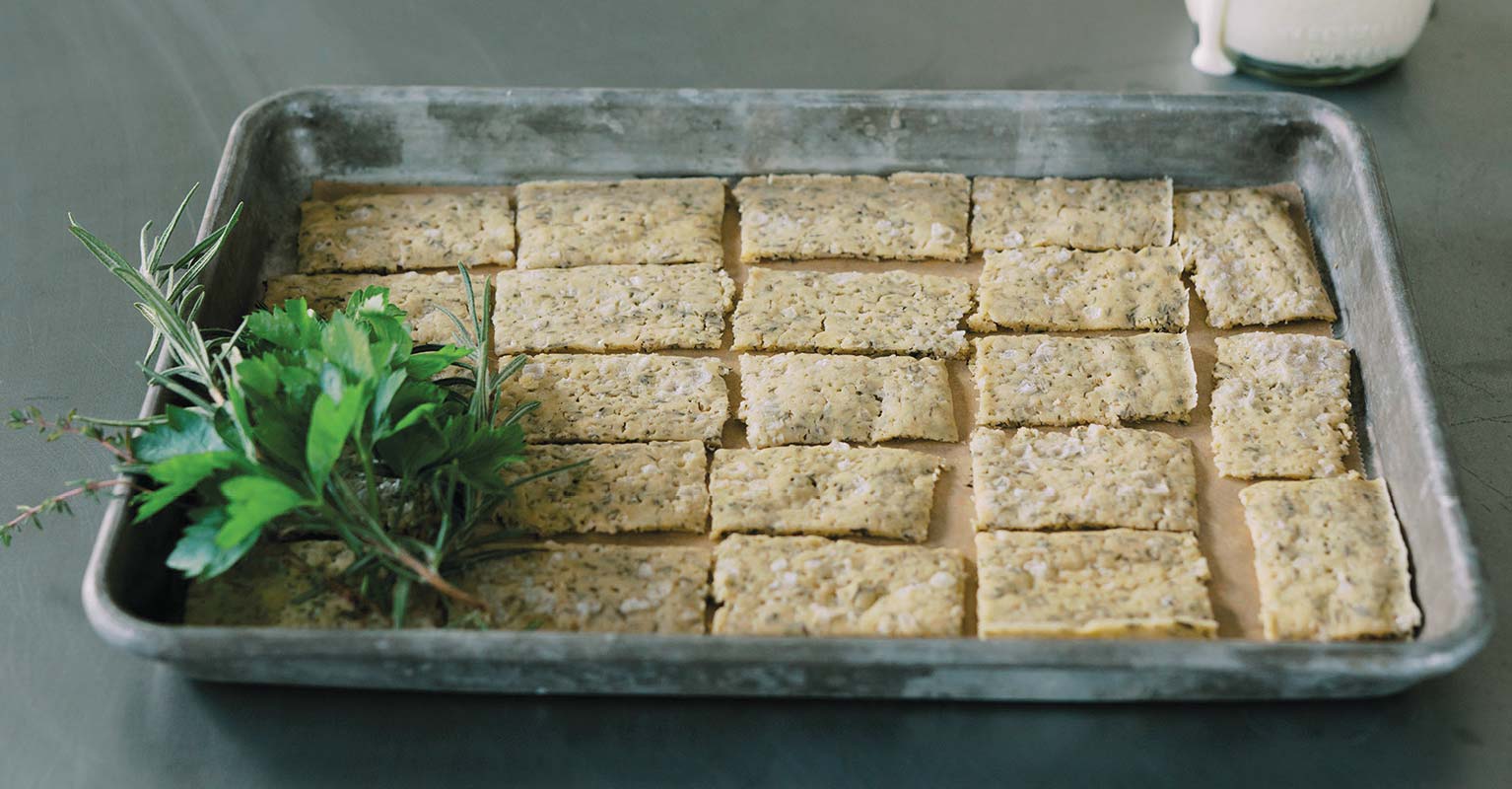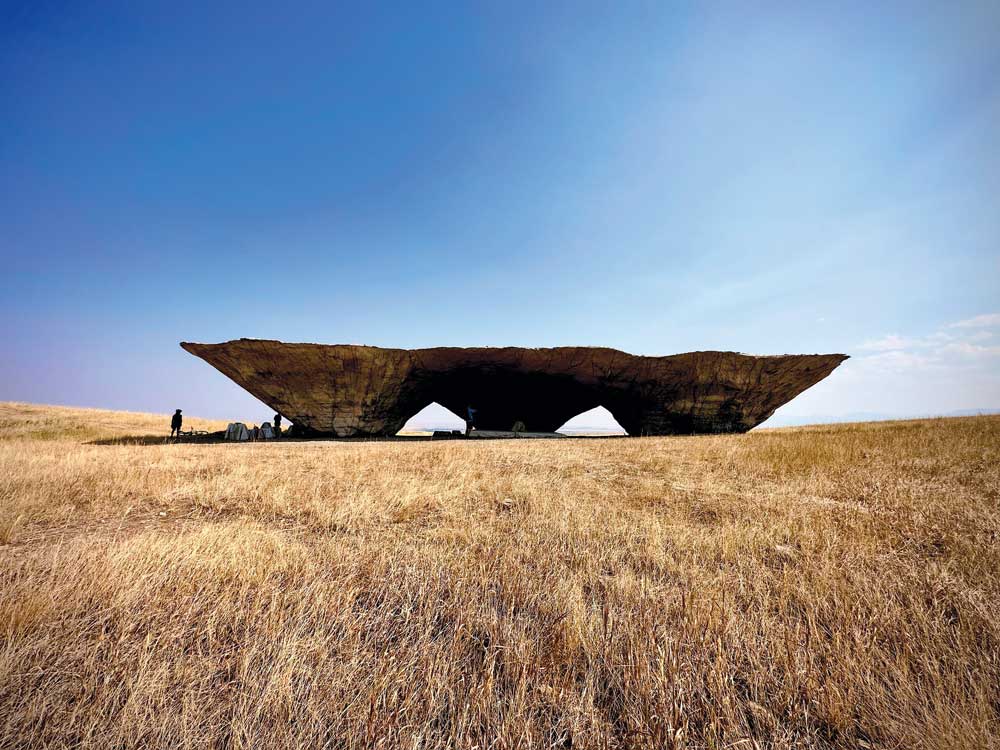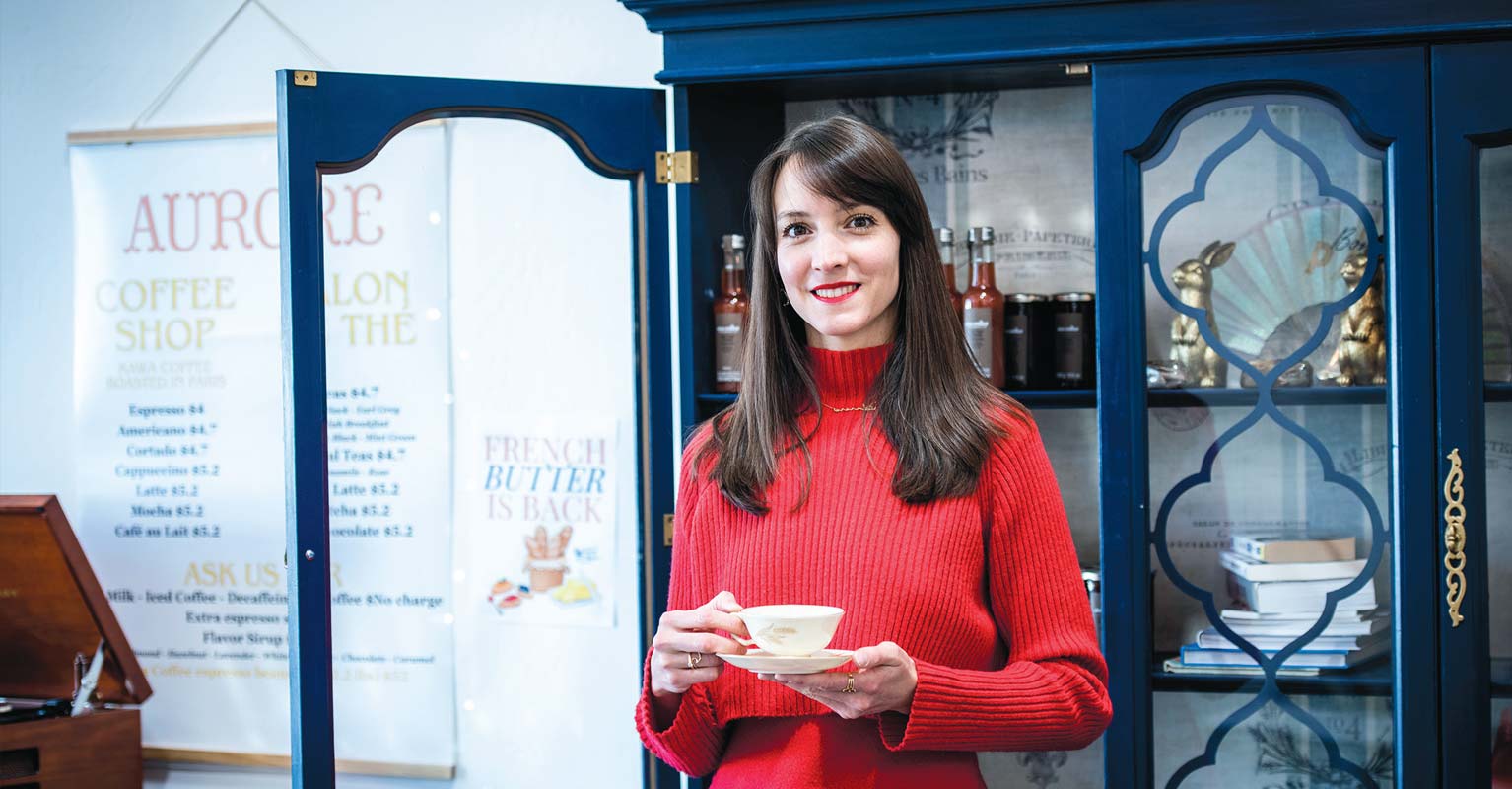Jaimie Stoltzfus, a rancher, mom, and entrepreneur, is one of many Montana women paving the way for a sustainable, more viable ranching future. Photo by Meg Juenker.
Paving the way for a sustainable ranching future
With tears in her eyes, Nicole Masters described a moment in her life 25 years ago that changed everything. She stammered, voice cracked, as she repeated the words that a man said to her at 3 a.m. one night in Byron Bay, Australia: “I’ve come to rape you.” She called for help and, thankfully, help came, though the man ran away before he was arrested.
“That moment totally changed the direction of my life,” Masters said. She had been fearlessly bucking the system—traveling alone, hitchhiking—and she realized her risky behavior was a reaction to being told she shouldn’t because she’s a girl. She started to ask herself, rather than react to gender-based limits, how could she incite social change. How could she create a positive space for women?
For participants of the 2021 Confl uence: Building Community from Land to Table, a virtual gathering hosted by Western Landowners Alliance and the Good Meat Project, it may have come as a surprise to hear an agroecologist share such a vulnerable story. It was a far cry from her usual talk about microbes and soil health, but, as the keynote address, the eff ect was profound. In an instant, some 275 women from all across the globe were drawn closer, entering into a space where each could be her true self. Held November 11–13, 2021, the Confluence gathered women working at every level of the meat supply chain in a virtual format to share knowledge, collaborate, and inspire each other.
As a part of WLA’s Women in Ranching program, the Confluence is one way to help women in the industry become more resilient. “If we’re trying to move the West forward, we actually need a diversity of voices, a diversity of land stewards, at the decision-making table,” says Program Director Amber Smith, who operates a ranch with her husband north of Miles City.
According to Smith, many women can feel isolated and alone as they work tirelessly to steward land, animals, and community. But moving away from those feelings of isolation, finding connections with each other, can reinvigorate operations, land, and livestock management at large.
“It’s having a network of people—regardless of gender, job, economic status, location—who you can reach out to, connect with, and count on,” Smith says. “What I see is women stepping forward in new ways, encouraged.”
Whether it’s through vulnerable conversations, community gatherings, or entrepreneurial spirit, women across the meat supply chain are entering more visible leadership positions. For many women in ranching, adopting a direct-to-consumer model has become an eff ective strategy for selling beef, particularly after COVID exacerbated the already struggling industry. (To learn more about this, read “In High Demand” in the Winter 2021 edition of Edible Bozeman, available at ediblebozeman.com.) While increasingly more profitable than the conventional model of selling calves to a packing company, selling beef direct-toconsumer is one way that women are caring for their community, forging connections, and reminding themselves: We’re not alone.
Meet three of the women leading the way in Montana.

Uncommon Beef
Big Timber
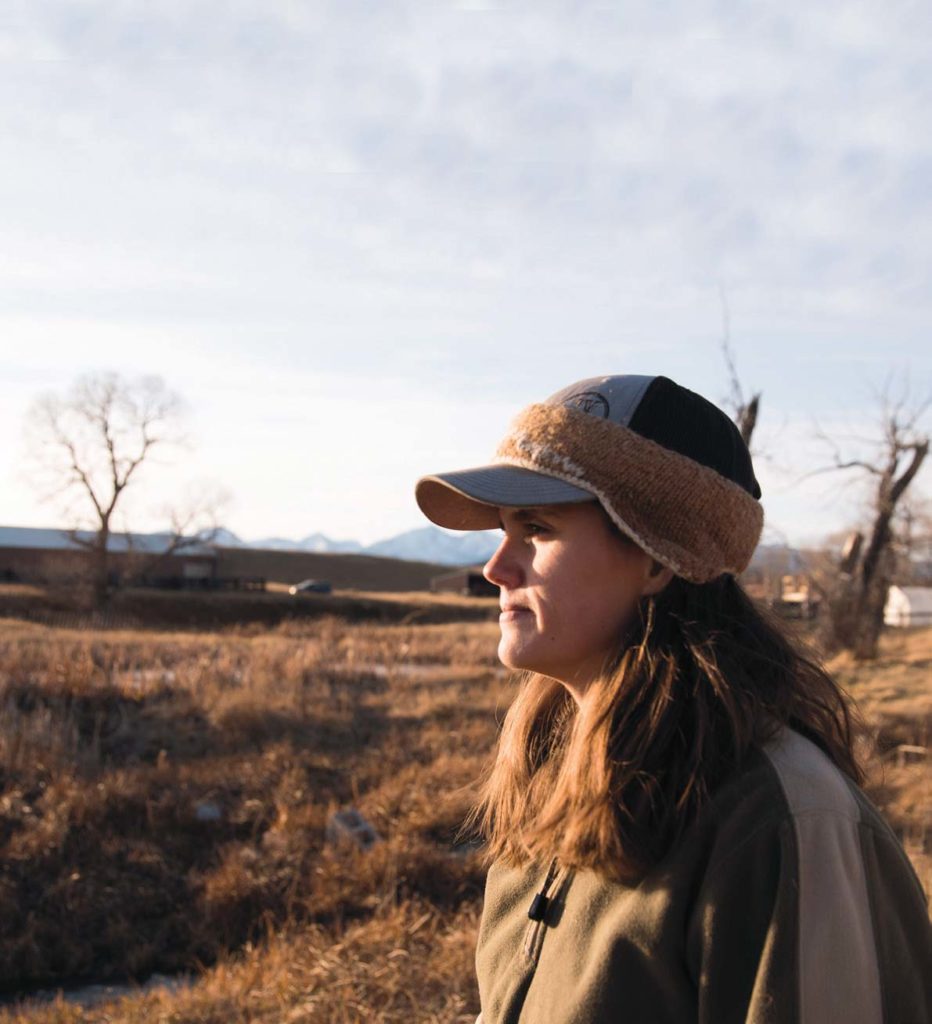
Catherine Kirchner is a self-proclaimed newcomer to agriculture. “It’s always been a quiet call in my heart,” she says. “I’ve always been drawn to the land and working with my hands.”
In 2020, after a 10-year career in education, Kirchner left her position as principal of a Livingston school and bought cattle. While also working as a ranch hand for a larger local operation, Kirchner applied herself to land stewardship and adopted rotational grazing methods that build soil health.
While she says the barriers to entry in agriculture are steep due to lack of access to pasture leases and generational experience or know-how, she’s encouraged by her Montana neighbors’ interest in buying local.
“Sometimes it feels like I haven’t earned the cowboy hat, or it doesn’t fit yet,” she says. “But I think it’s a mind-set. You can belong here if you want to be, if your heart is in the right place, and you’re willing to put in the time and be humble and learn.”
Photo by Meg Juenker.
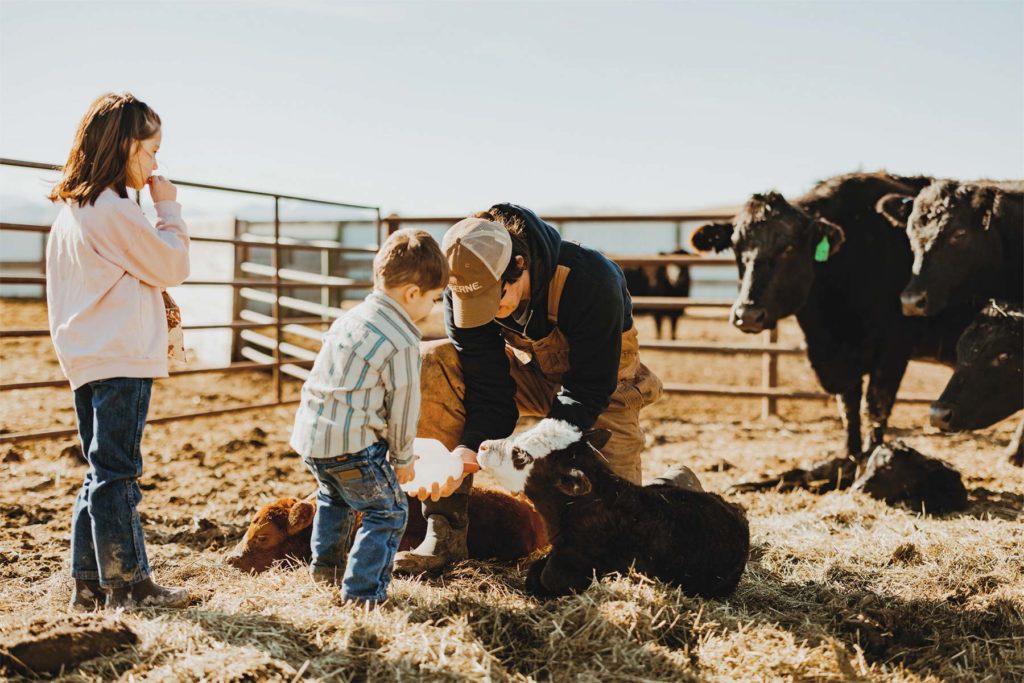
Williams Angus
Three Forks
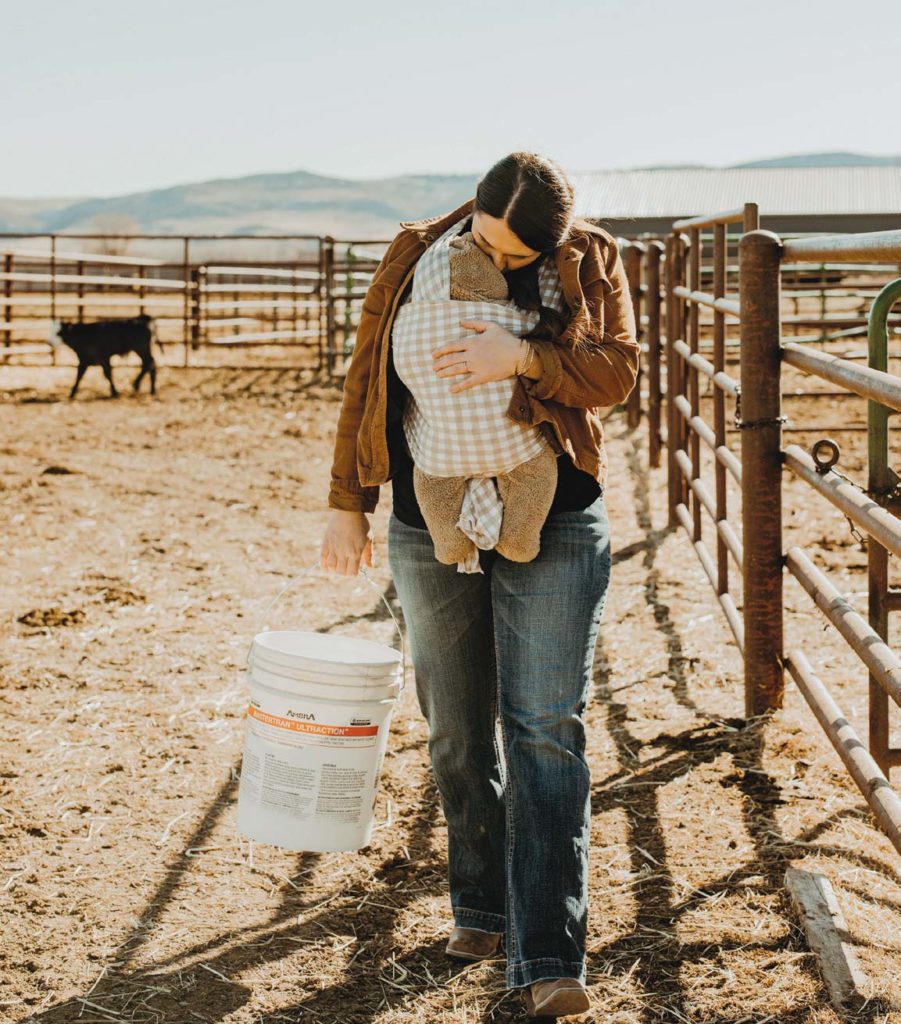
JaTanna Williams’s philosophy for ranching is simple: She sells beef as a family to families. A mother of four young children, she works on the family ranch alongside her husband, his parents, and grandparents on land that extends from the banks of the Jefferson River where the Williams family homesteaded in 1865.
In years past, JaTanna sold beef nationwide, shipping her family’s beef directly to consumers’ doors. These days, she prefers to distribute beef to her local community, face-to-face, neighbor-to-neighbor.
“It’s a way to build community and show how beef is sustainably raised,” she says, adding that people are becoming more distanced from agriculture because fewer people have immediate ties to the agricultural community. “The majority of consumers no longer have that personal connection to the producer. I’d like to change that. I’d love for families to know their farmers and ranchers, to know and love where their food comes from.”
Photo by Tawnee Wilcox.
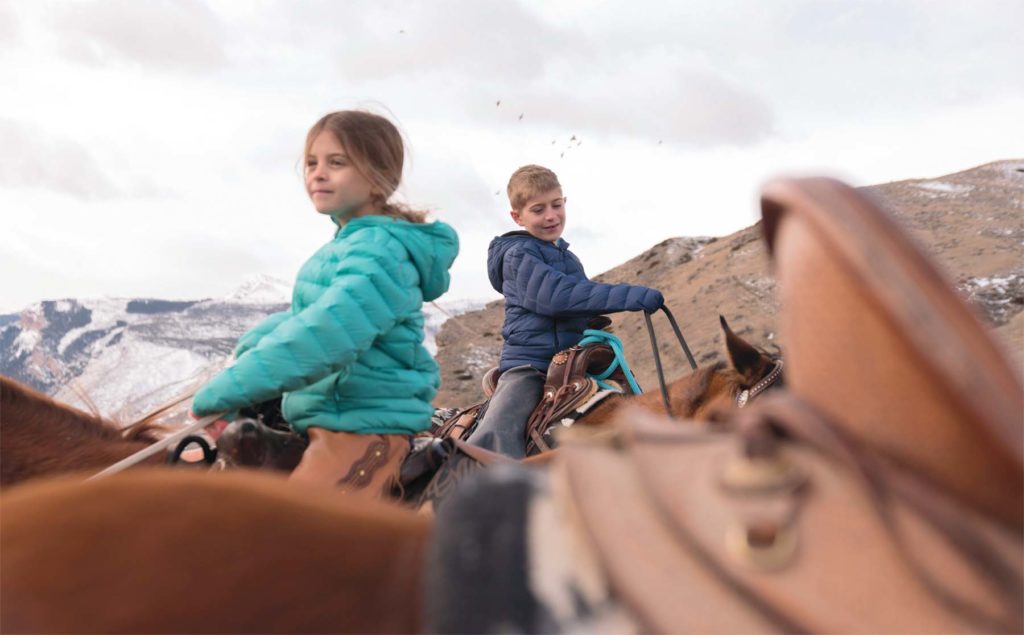
Cowgirl Meat Co.
McLeod

Jaimie Stoltzfus believes there are great opportunities for women in agriculture. “I think the challenge is balancing it all,” she says. “As women we are by nature really good at multi-tasking. We end up doing work on the ranches and farms and at the same time we are raising our kids and keeping the home.”
Stoltzfus markets the beef and pork her family raises. She is also a co-organizer of the annual Art of the Cowgirl gathering that celebrates women’s contributions to the West and she was a guest speaker during the 2020 WLA Confluence.
Overall, Stoltzfus is seeing an increase in the number of ranching women who are hustling the market selling their beef, which she says is a great way to make ranching more viable.
“It’s important to bridge the gap,” she says. “At the end of the day, if more people stopped to think about the importance of food and where their food comes from, as well as the relationship between health and what we are feeding ourselves, there would be a lot more appreciation and support for local agriculture.”
Photo by Meg Juenker.


